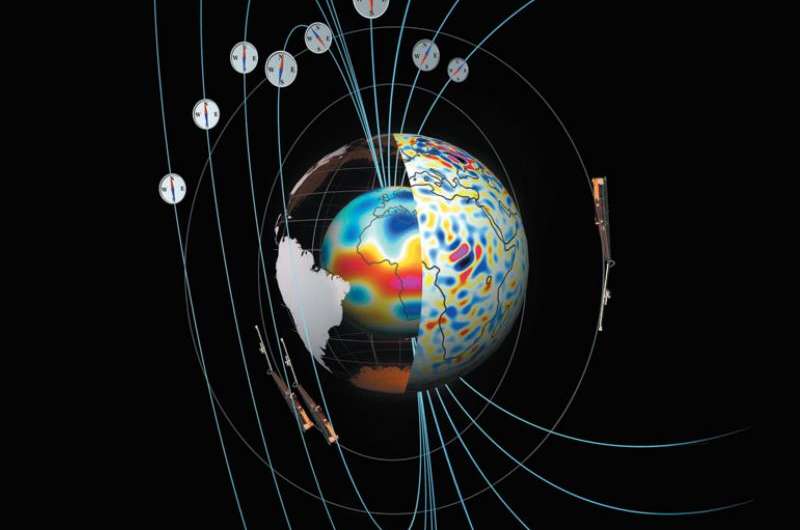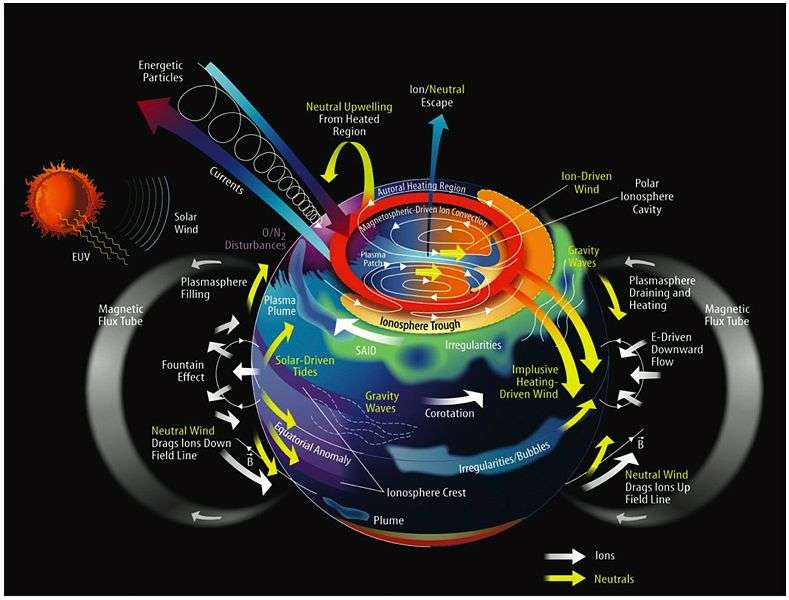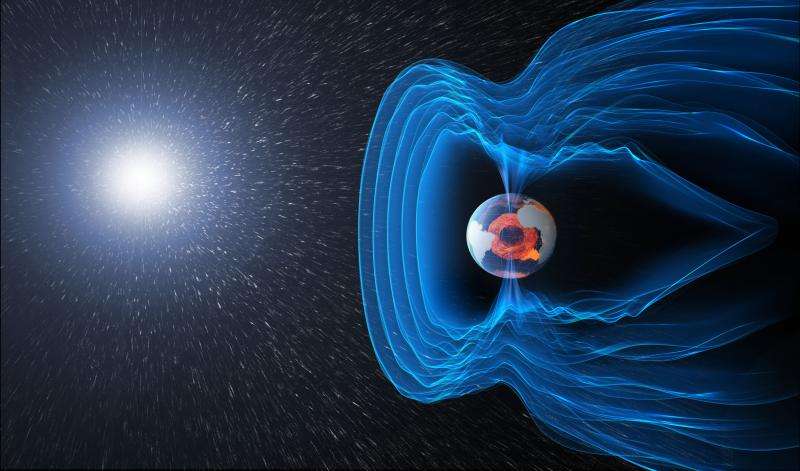Magnetic complexity begins to untangle

After a year in orbit, the three Swarm satellites have provided a first glimpse inside Earth and started to shed new light on the dynamics of the upper atmosphere – all the way from the ionosphere about 100 km above, through to the outer reaches of our protective magnetic shield.
A series of scientific papers published recently in Geophysical Research Letters and collected in a special issue, confirms the remarkable potential of this unique mission.
Rune Floberghagen, ESA's Swarm Mission Manager, said, "These results show that all the meticulous effort that went into making Swarm the best-ever spaceborne magnetometry mission is certainly paying off."
Swarm is tasked with measuring and untangling the different magnetic signals that stem from Earth's core, mantle, crust, oceans, ionosphere and magnetosphere – an undertaking that will take at least four years to complete.
In doing so, the mission will provide insight into many natural processes, from those occurring deep inside the planet through to weather in space caused by solar activity. In turn, this information will yield a better understanding of why the magnetic field is weakening.
The three satellites may be identical, but to optimise sampling in space and time their orbits are different and change over the course of the mission's life – a key aspect of the mission.
Swarm is the first mission to take advantage of 'magnetic gradiometry', which is achieved by two of the satellites orbiting side-by-side at a distance of about 100 km. This is used to unravel the details of the magnetic field produced by magnetised rocks in Earth's crust.
Nils Olsen from DTU Space in Denmark said, "We are extremely satisfied with these preliminary results.
"Not only do they validate the gradiometry concept, but they also confirm the remarkable accuracy of the satellites' absolute magnetic measurements.
The Swarm constellation also makes it much easier to monitor the changes that occur in the main field produced in the Earth's core, which protects us from harmful charged cosmic particles.
One of the three lead proposers of the Swarm mission, Gauthier Hulot from IPG Paris, added, "Our magnetic field is largely generated by Earth's outer core. The constellation provides detail on the way the field is changing and thereby weakening our protective shield.
"This is what will ultimately make it possible to predict the way this field will evolve over the next decades."
Very early on in the mission, when the three satellites were orbiting much closer together, first like pearls-on-a-string and later side-by-side, with one satellite progressively reaching a slightly higher orbit and separating from the lower pair, much advantage could be taken of the GPS receivers, thermal-ion imagers and Langmuir probes, which complement the magnetometers on each satellite.
Consequently, most of the early results focus on signals produced by the very dynamic electric currents near Earth.
This sheds new light onto the behaviour of the many currents flowing within the ionosphere and along the connections to the magnetosphere.

It is also leading to a better understanding of the dynamics of small-scale structures of ionospheric plasma, the very type of phenomena related to space weather that limit GPS positioning and radio transmissions.
All this, however, is only the first in what is likely to be a long list of results.
Roger Haagmans, ESA's Swarm Mission Scientist, said, "The Swarm satellites will be in orbit for another three years at least. While the data accumulate, scientists will no doubt find other novel ways of making the best of the mission.

"New science has already emerged, for example, a joint analysis of data from Swarm and ESA's Space Science Cluster mission has been published."
"For the time being, the priority is to make sure that the science community can take advantage of the first results of the mission," remarks Nils Olsen, who leads the Swarm Satellite Constellation Application and Research Facility, a consortium of European, US and Canadian institutes in charge of producing advanced models of the various sources of the geomagnetic field from Swarm data.
All of these results will be presented at the 26th General Assembly of the International Union of Geodesy and Geophysics on 22 June – 2 July in Prague, Czech Republic.
More information: The special issue of Geophysical Research Letters is available online: agupubs.onlinelibrary.wiley.co … ialIssues(VI)SWARM1/
Journal information: Geophysical Research Letters
Provided by European Space Agency





















